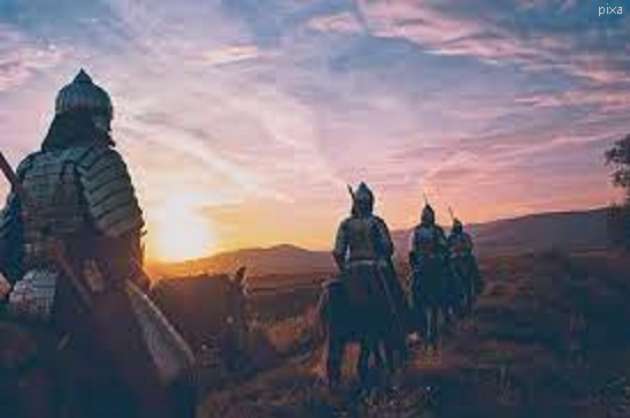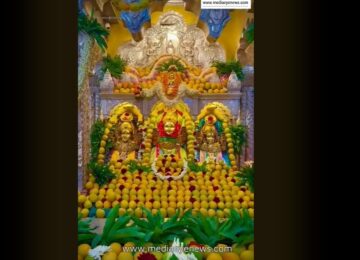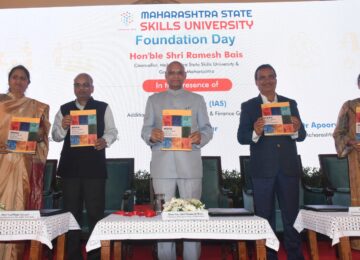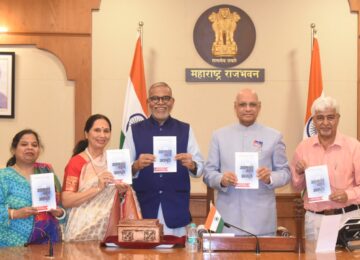Anupama Nair
www.mediaeyenews.com
I had written about the degradation of Indian culture, tradition, religion after the mlechas set up their rule. Now I am writing about the brave sons and daughters of Bhatrat Ma who fought against these tyrants. Let me start with Naiki Devi
In the year 1173, the young Ghurid prince, Muhammad Shahabuddin Ghori had just managed to conquer the Ghaznavids in Afghanistan, and he did something which no other king could do, — the troops of Alexander the Great, the Persians, the Arabs and even Mahmud of Ghazni could not — conduct successful invasion deep into the heart of the Indian Subcontinent. Muhammad Ghori first invaded Multan and the fortress of Uch. After achieving victories in Multan and Uch, he eyed the Rajputana and Gujarat. Can you guess his target? — the prosperous and well-fortified town of Anhilwara Patan (Gujarat). It was established by Vanraj of the Chapotkata dynasty in the 8th century, and Anhilwara Patan was the capital of the Chalukya (also known as the Solankis) who ousted the Chapotkatas.
Ghori was confident he would defeat the kingdom as he assumed a mere woman and her child would not provide much resistance. But unfortunately for him , he learnt a lesson– never to underestimate the great valor of a young Indian queen. Unconcerned about the prospect of Ghori’s impending attack, she took command of the Chalukyan army and threw herself into organizing a well-planned opposition to the invading army. Nayaki Devi now was thinking of a strategy to defeat the enemy. She even cleverly chose the site of the battle — the hilly passes of Gadaraghatta at the foot of Mount Abu near the village of Kasahrada, (Kyara in Sirohi district which is 65 km away from Anahilavada). The narrow passes gained were a huge advantage and surprisingly, the invading army was at great disadvantage. The Chaulukyan army was headed by Nayaki Devi with the boy-king sitting on her lap. Her army and the troop of elephants crushed the massive army, which were famous for defeating the mighty Sultans of Multan. Nayaki Devi killed several enemy soldiers, and Ghori the coward he was, fled with a handful of bodyguards. The battle was known as Battle of Kasahrada.
Kurma Devi was the brave daughter of a braver mother. She was a witness to her mother defeating the cruel invader Ghori. She was married to Samar Singh, the Rawal of Chittorgarh, who had two wives. His first wife was Prithabai who was the sister of one of India’s greatest sons – Prithvi Raj Chauhan and the other wife was Kurma Devi. Prithvi Raj Chauhan fought Muhammad Ghori, and was martyred, but killed Ghori too.
Unfortunately, Samar Singh and his eldest son were killed in the Second Battle Of Tarain (1191-92 AD) that was fought between Prithvi Raj Chauhan and Muhammad Ghori. After the war Ghori returned to Multan and left Qutub-ud-din Aibak in charge of Delhi. Now let us talk about Quṭub-ud-Dīn Aibak who was the founder of the Mamluk dynasty and the first sultan of the Delhi Sultanate. He was born in Turkistan and was a slave. When his master died, he was sold by his master’s son to Muhammad of Gori, who made him the Amir-i-Akhur (Master of Slaves). Over the years, he joined Gori’s military and rose to become the general of Muhammad of Gori.
Kurma Devi had to look after her young son Karan Singh. After a couple of years, Kurma Devi led her army with nine other kings and eleven Rawats, in her march towards Delhi to seek revenge against the man who had killed her husband, and kill him — Qutub-ud-Din Aibak. Kurma Devi and her army encountered Qutub-ud-Din Aibak and his army near the old Amber Fort. She herself confronted Aibak and challenged him in a duel. What a brave woman to challenge a sultan! In the duel, this brave queen managed to bury her sword deep into Qutub-ud-Din’s flesh, and he was so severely wounded that he tumbled from his horse. Aibak’s army believed he was dead, and the cowards that they were, instead of fighting back they fled from the battlefield. Kurma Devi thought that she had avenged the death of her dead husband with the death of Qutub-ud-din and she returned to Chittorgarh.
Now I am going to write about the brave Ratan Singh who was the Rana of Mewar. According to Jayasi, she was the daughter of the king of Singhal or Sri Lanka. She was famous for her beauty and her archery skills. She had a talking parrot Hiraman, and the king hated their friendship, So, the parrot was ordered to be executed. However, it somehow escaped and managed to reach the palace of the king of Mewar Rana Ratan Singh. The parrot praised the beauty of Rani Padmavati and Rana Ratan Singh who was enchanted by her beauty was determined to marry her. He reached Singhal and he married her after he fulfilled her vow of defeating her in a duel. However, his first wife Nagmati refused to accept her.
There was a Brahmin courtier in the court of Ratan Singh called Raghav Chetan. He was banished from the kingdom by Ratan Singh for fraud. Raghav reached Delhi to the court of the cruel and lusty Sultan Allaudin Khilji. He praised the beauty of Rani Padmavati and the womanizer that he was, Allaudin decided to obtain her and hence, attacked Chittor. However, he failed to conquer Chittor and offered a fake peace treaty to Ratan Singh and deceitfully captured him. However, a sequence of events followed and the brave Rana was released from his captivity by his loyal men, Gora and Badal who entered the fort by disguising as Rani Padmavati while they sat inside the palanquin. In a battle Rana Ratan Singh was martyred and Allaudin then attacked Chittor. The brave women of Chittor led by Padmavati committed Jauhar to save their honor from the lusty Islamic invaders.
Many centuries later Bharat was invaded by the Mughals who has the distinction of the most tyrannical rulers in mankind. It was Rana Sanga who managed to save his country was martyred. Rana Sanga was born to the Sisodia king Rana Raimal and his queen Ratan Kunwar. After he became the king, Sanga reunited the warring Rajput clans through diplomacy and marital alliances. According to folklores, Sanga had fought one hundred battles and lost only once. In various struggle he lost his wrist and was crippled. He also removed the Jaziya tax which was earlier imposed by the Sultans who ruled India. He was the last independent Hindu king of Northern India to control a significant territory and contemporary texts described him as the “Hindu Emperor”.
After conquering Malwa, Sanga turned his attention towards North Eastern Rajasthan which was then under the control of an ally of the Khillji’s Ibrahim Lodi of Delhi. This battle between Lodi and Sanga is called the Battle of Khanwa. It was the second major battle fought in modern-day India, after the Battle of Panipat. After hearing the news of Sanga attacking his territory, Lodi prepared an army and marched against Mewar in 1517. There was a fierce battle and the army of Lodi suffered serious injury and the cowards they were, they fled. One Lodi prince was captured and imprisoned. The brave Rana Sanga lost an arm by a sword cut, and an arrow made him lame for life.
On 21 April 1526, the Babur invaded India for the fifth time and defeated Ibrahim Lodhi in the First Battle of Panipat and executed him. After the battle, Sanga unified several Rajput clans for the first time since Prithvi Raj Chauhan, and built an army of 100,000 Rajput soldiers and proceeded to Agra. The Mughals managed to capture the Bayana Fort and a major clash took place in Bayana in 1527 in which Mughal forces led by Chin Timur Khan were defeated by Rajput forces led by Prithvi Raj Kachwaha and later by Rana Sanga himself. The defeat was the last of Rana Sanga success.
The Mughals were terrified by Rajput valor and asked Babur to leave for Kabul. This is the main difference between Indian warriors and the foreigners from Muhammad Ghori as we fight till the last breath, while these cowards flee at the time of danger. In the battle fought at Khanwa, the Mughal were victorious due to their cannons, matchlocks and other firearms. Following his victory, Babur ordered a tower of enemy skulls to be erected, a practice followed by his ancestor Taimur the Lame, against his adversaries, irrespective of their religious beliefs. While he was preparing to wage another war against Babur, he was poisoned by his own nobles who did not want another battle. He died in Kalpi in 1528, and was succeeded by his son Ratan Singh II.
We should appreciate such great souls who gave up their lives for their motherland.




























Again wonderful stories. They are mlechas if they call us kafirs.